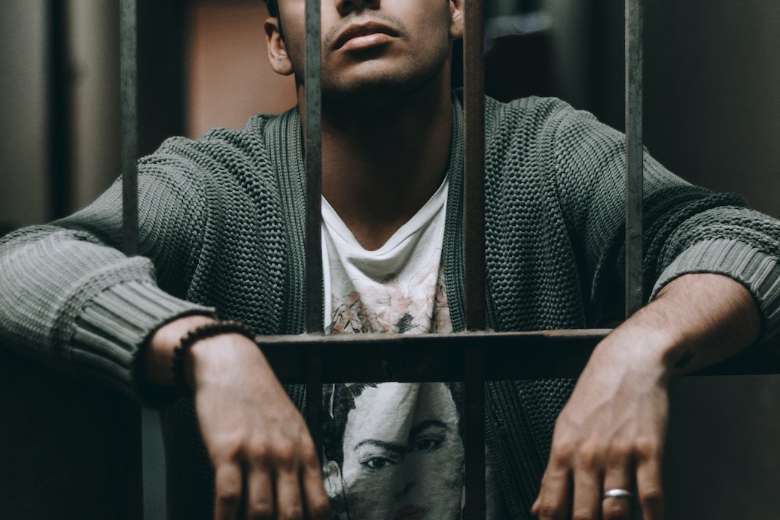India’s 21st-century dungeons
Government is tardy with revealing jail data, much less that which will expose inhumanity or state criminality

A little plastic hollow straw, much like the one you’d get with fresh tender coconut or cold drink at a roadside eatery, has gained much attention not just on the vagaries of the law of the land and its courts, but even more on the conditions in the prisons in India.
It took several weeks for 84-year-old Jesuit Father Stan Swamy–in prison as a mere suspect in a trumped-up conspiracy called the Bhima-Koregaon case–to get the plastic drinking straw, which he needs to take a sip of water or tea because his Parkinson’s disease afflicted hands can bare hold the cup. He is not yet an undertrial, and certainly not a convict.
It has taken a few years and many appeals in courts for Delhi University Associate professor G Saibaba, a wheelchair-bound paraplegic, who needs two fellow prisoners’ assistance to go to the toilet, seeking treatment he needs if he is not to die in his cell. His plaintive cry has gone unheard. He is an accused in a different conspiracy, not for triggering off a bomb blast, but for being an intellectual supporter of political militants opposed to the state.
A third activist, Gautam Navlakha, jailed in the Koregaon case, has been denied a pair of spectacles, which he wore when he was arrested, but have been taken away from him by someone in prison. He is all but blind without them. The jail authorities have not received a pair of glasses sent by his family.
These three cases beg many questions of the State. But this is about the situation in Indian jails where people on the verge of death, doddering octogenarians and youth, arrested on mere suspicion because they professed a certain religious, caste, or ethnic identity serve more than the sentence they would have merited if they were indeed guilty of the crimes for which they are now in custody.
Government is tardy with revealing data, much less that which will expose inhumanity or indeed state criminality and culpability, as would be the case of prison conditions. The only official data is released by the National Crime Research Bureau. Despite the internet, digitizing of all police stations and courts, the recourse to artificial intelligence, the 2019 Prison Statistics India data gives the figures of 2018. We will always be two years behind in information, as a default situation.
In 2018, therefore, we were told there were 1,350 prions, up from 1,339 the previous year. These 1,350 prions had a capacity of holding – for want of another term – 4,03,739 human beings. But they held 4,78,600 persons, almost 20 percent more than their capacity. The big prisons in major towns of the bigger states actually had a much higher density of inmates.
India has a total of 31 jails for women prisoners with a total capacity of holding 6,511 women. Of the 4,78,600 prisoners, 4,58,687 were men and 19,913 were women. Patently, the women’s jails are even more over-crowded unless states do not reveal that women prisoners may have been kept in some quarter of the male jail systems.
The more critical data is about undertrials, who have been in jail sometimes for a decade, if not more. Most of them are poor, Dalits or Muslims, far exceeding their presence in the general national populations.
There are 330,487 undertrial persons in that total of 478,600 inmates. The actual convicts were only 1,44,125. The rests are 3,223 detainees and 765 inmates who could not be classified in any official categories. We are talking about human beings.
The situation of the Undertrial Prisoners merits attention. The bureau admits that the number of undertrial prisoners has increased from 323,537 in 2018 to 330,487 in 2019. Most of these are too poor and illiterate to hire a lawyer to present their case before a court.
I do not know I should describe it as official compassion or not. There were 1,543 women prisoners with 1,779 children in 2019. Of these, 1,212 women were undertrial prisoners accompanied by 1,409 children and 325 convicted prisoners who were with 363 children. Some of these children may well have been born inside a jail.
The grimmest data is on deaths and illness in prisons. In 2019, there were 1,845 deaths, most described ad “natural’, but as many as 165 were called “unnatural death,” a term which admittedly includes suicide or murder. Among the 165 un-natural deaths of inmates, 116 inmates have committed suicide, 20 died in accidents, 10 were murdered by inmates, and one died due to assault by outside elements during 2019. For a total of 66 inmate deaths, the cause of death is yet to be known.
Just as a closing paragraph, 468 prisoners escaped captivity, but 231 caught again. And finally, as many as 20 jailbreaks occurred during 2019.
The saving grace? Unlike in some other countries, India has not privatized or corporatized the prison system. Not yet.
John Dayal is a journalist and human rights activist based in New Delhi. The views expressed in this article are those of the author and do not necessarily reflect the official editorial position of UCA News.
Courtesy: UCA News



